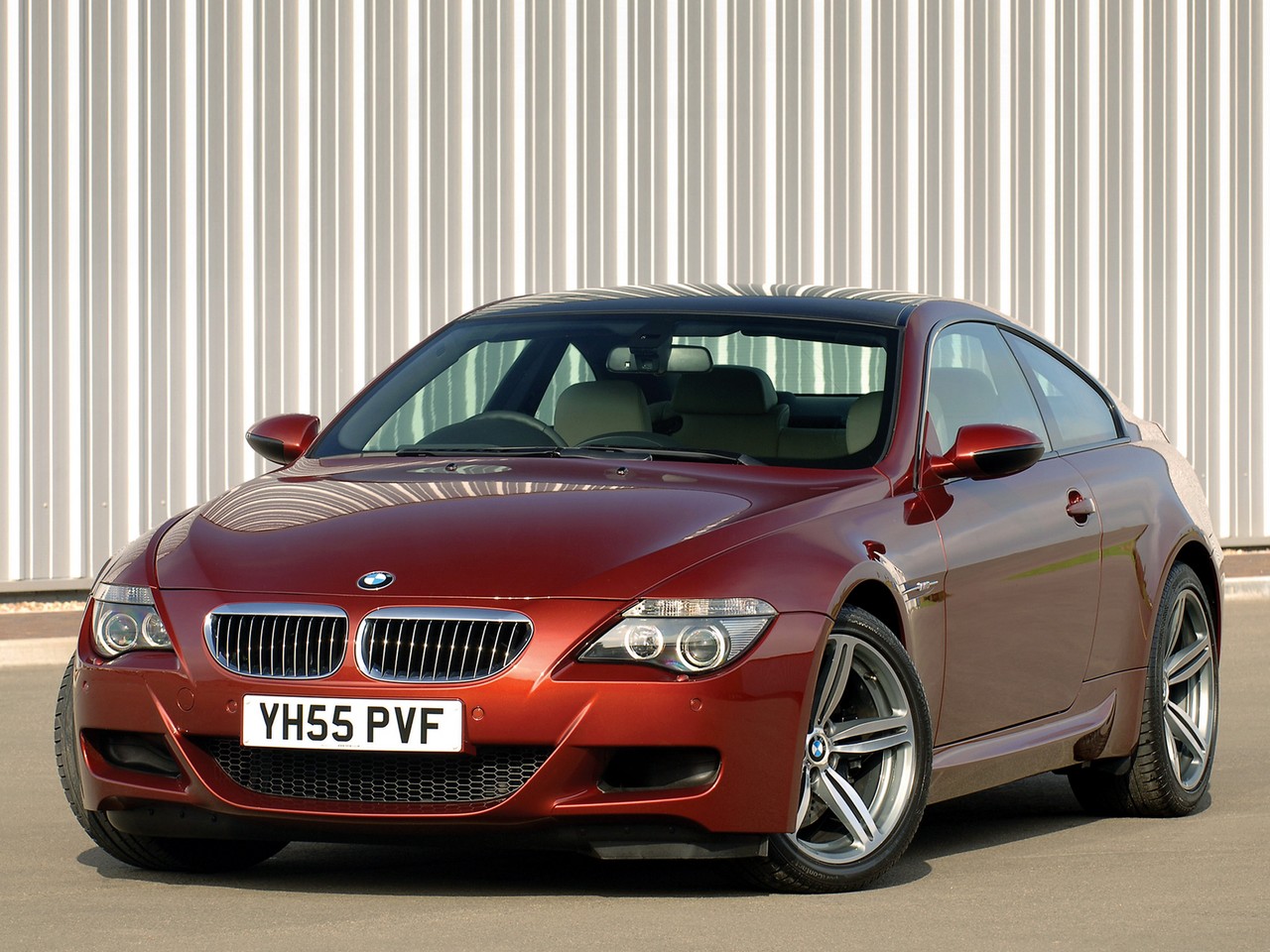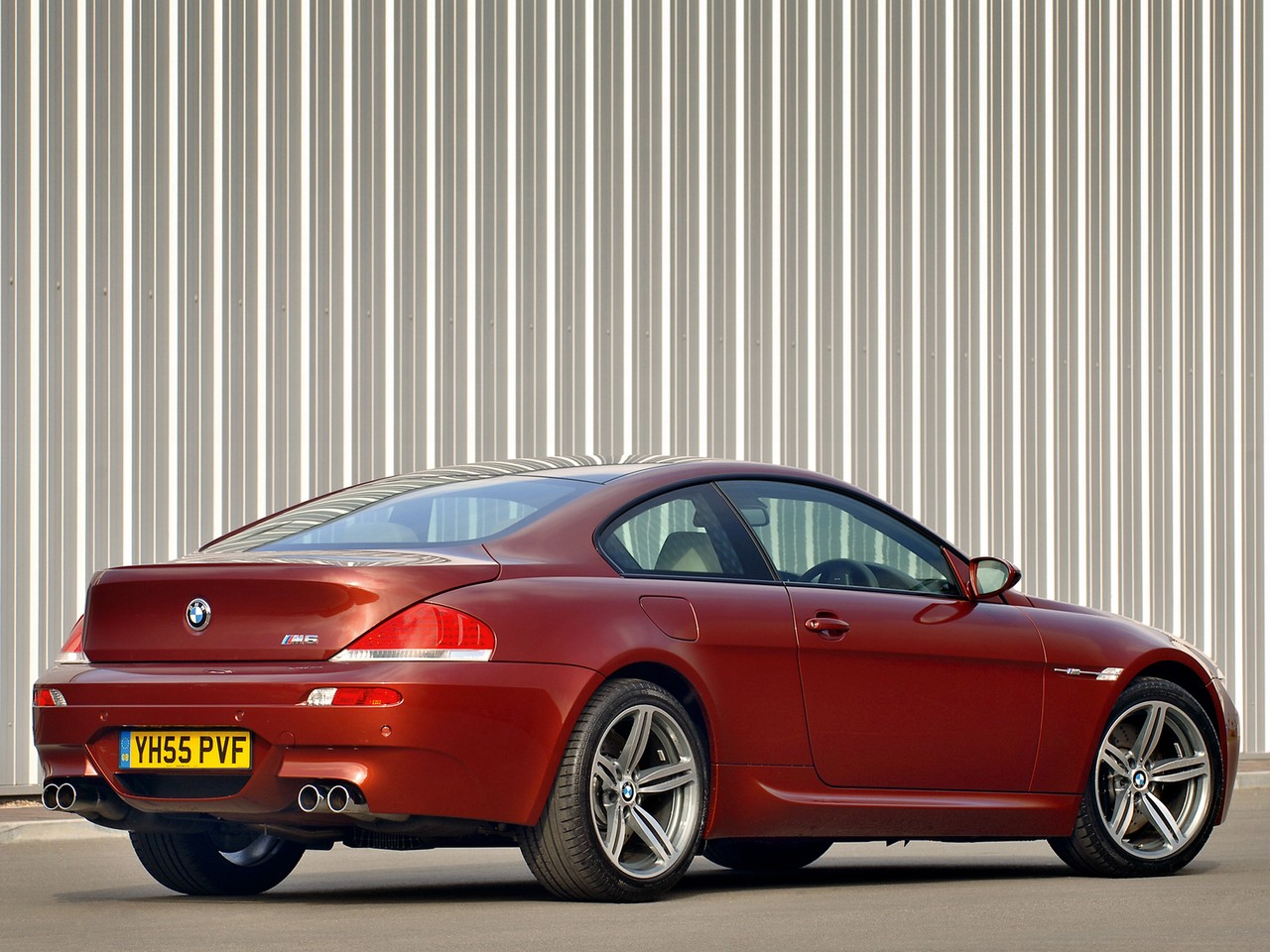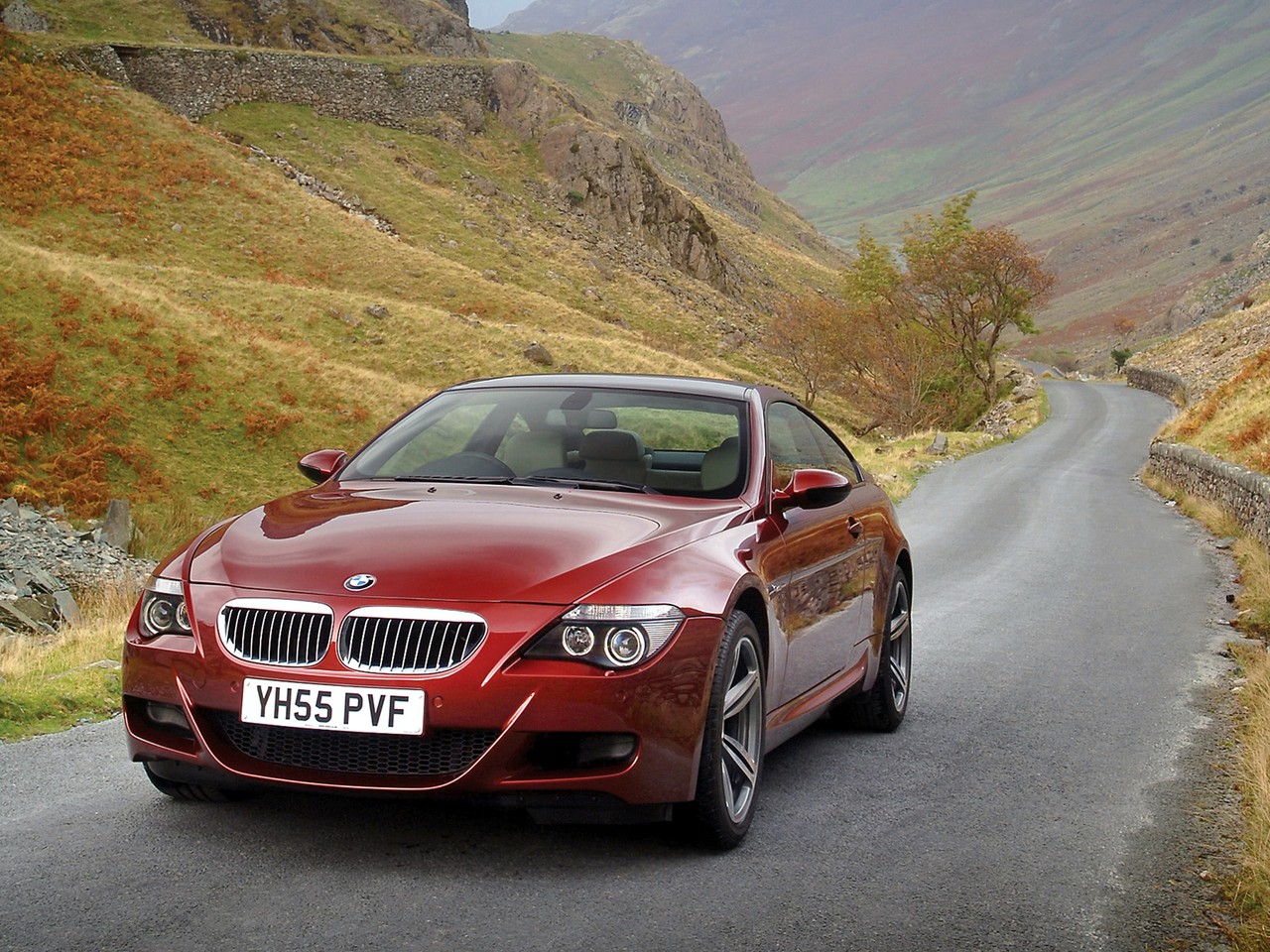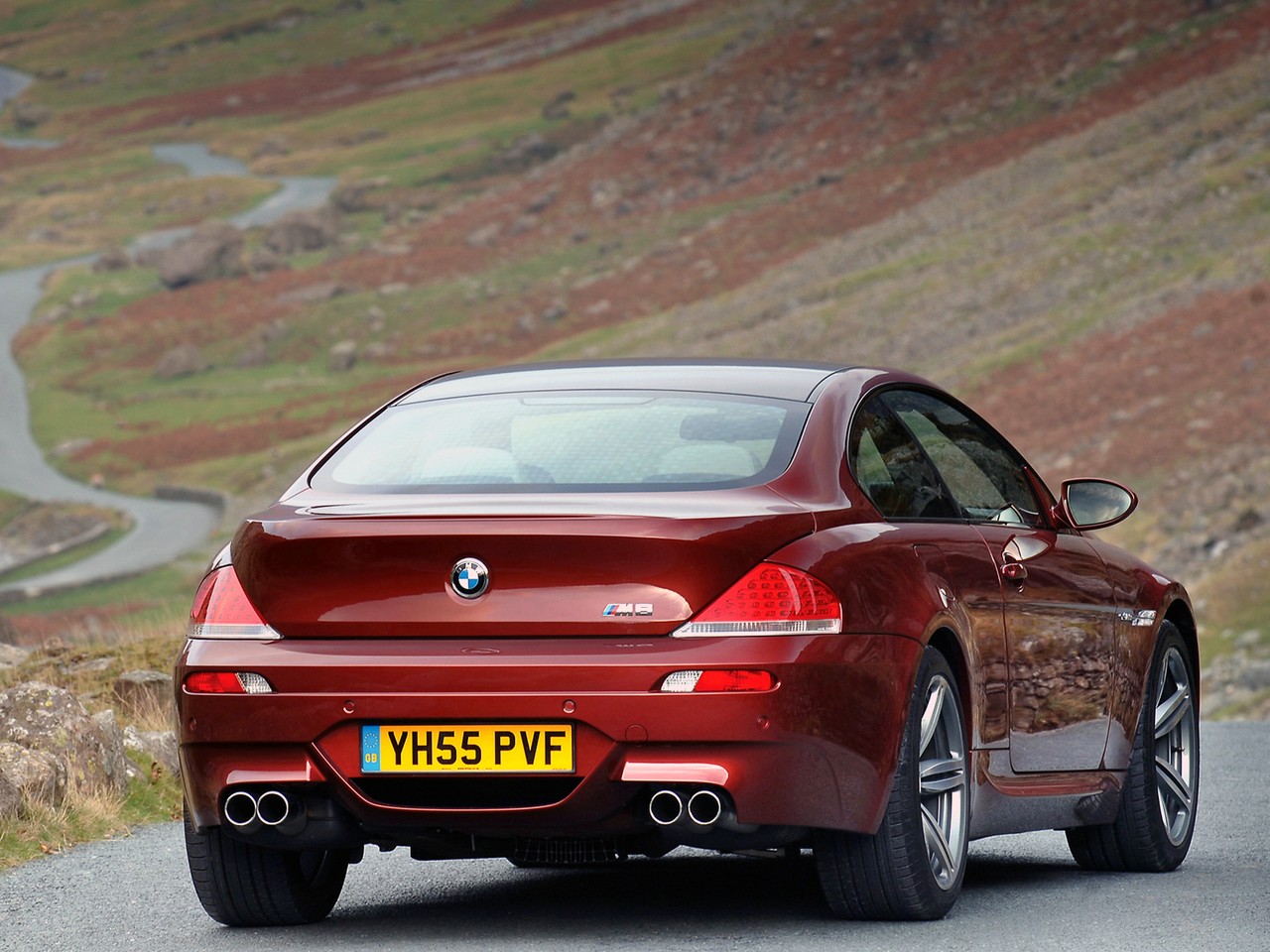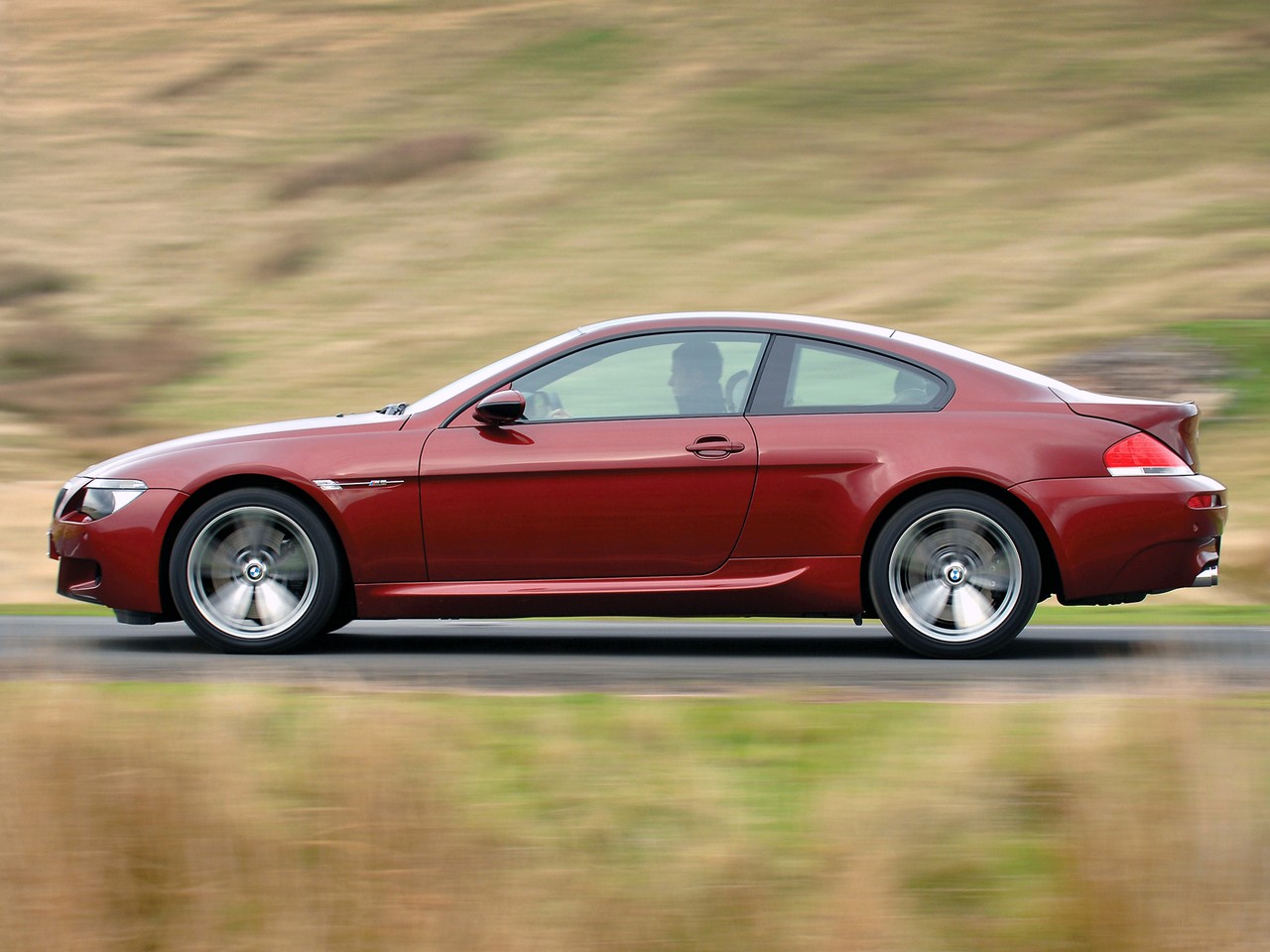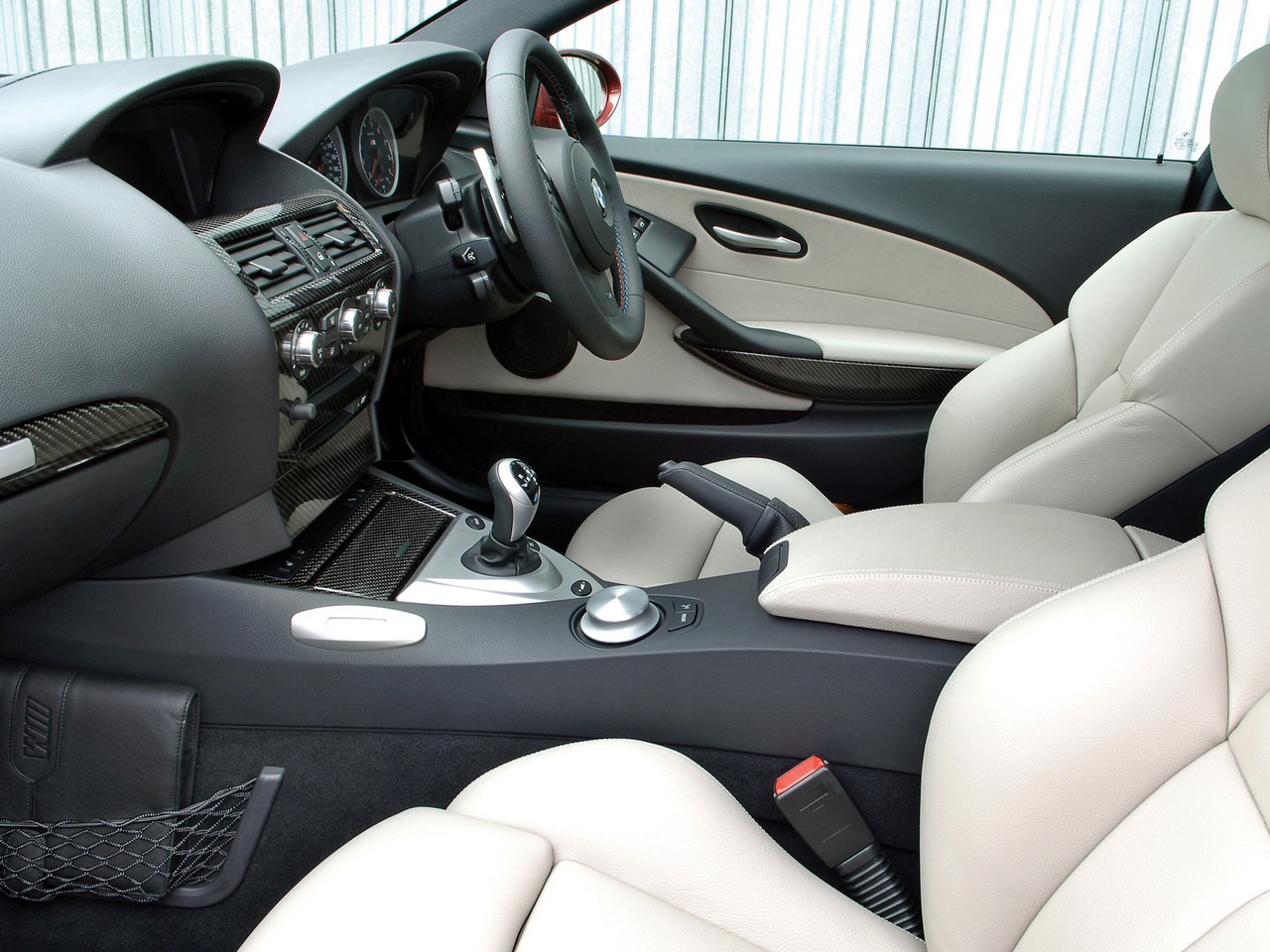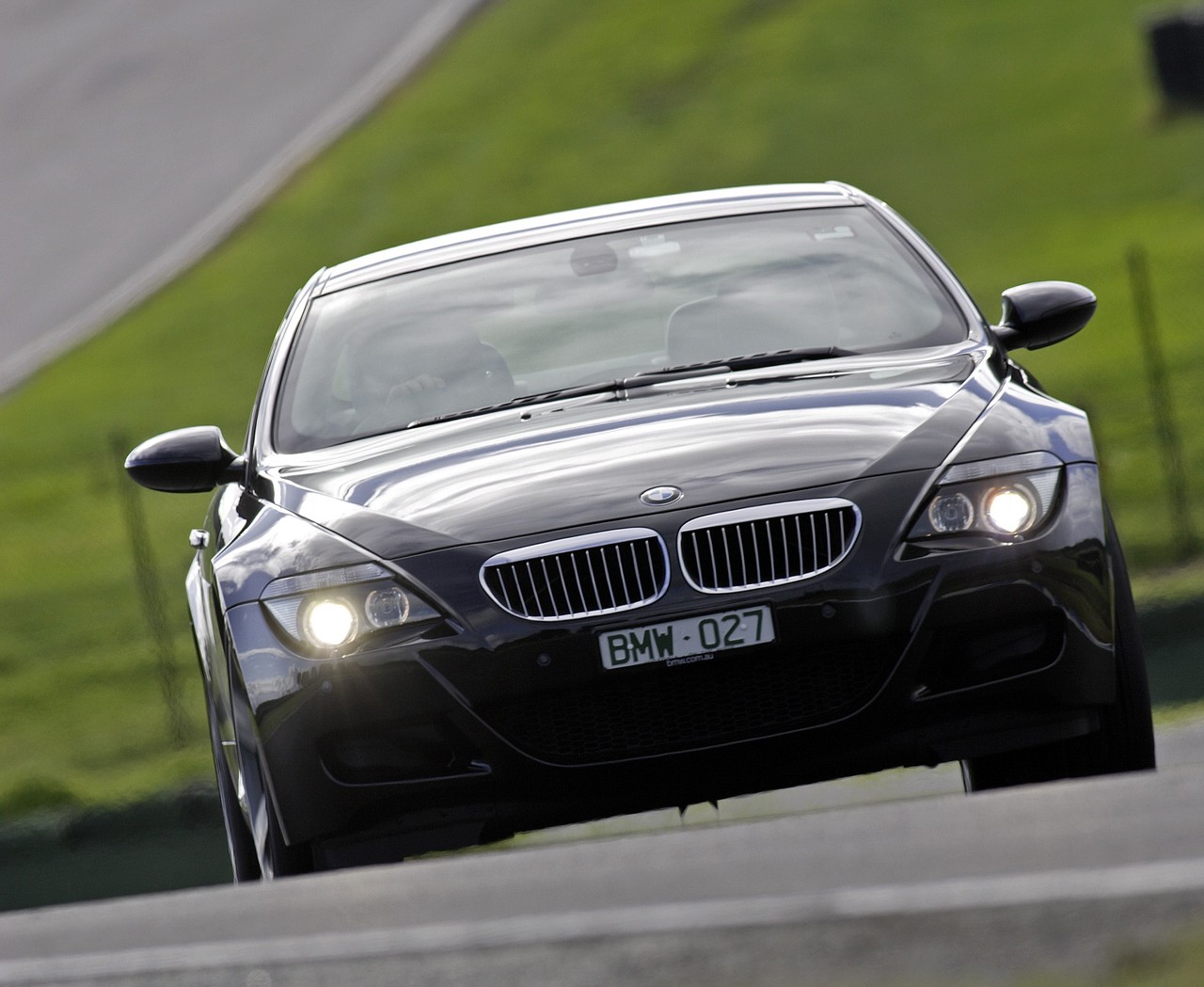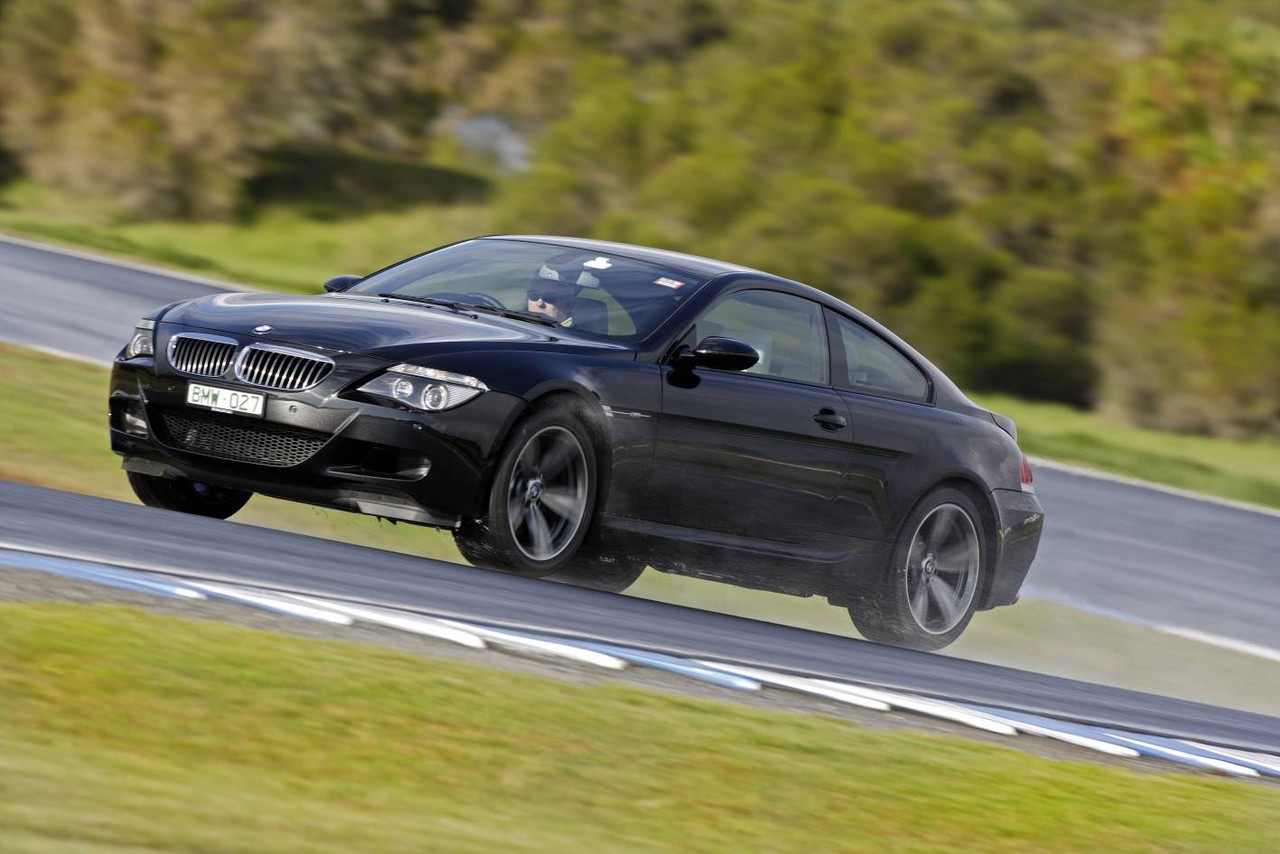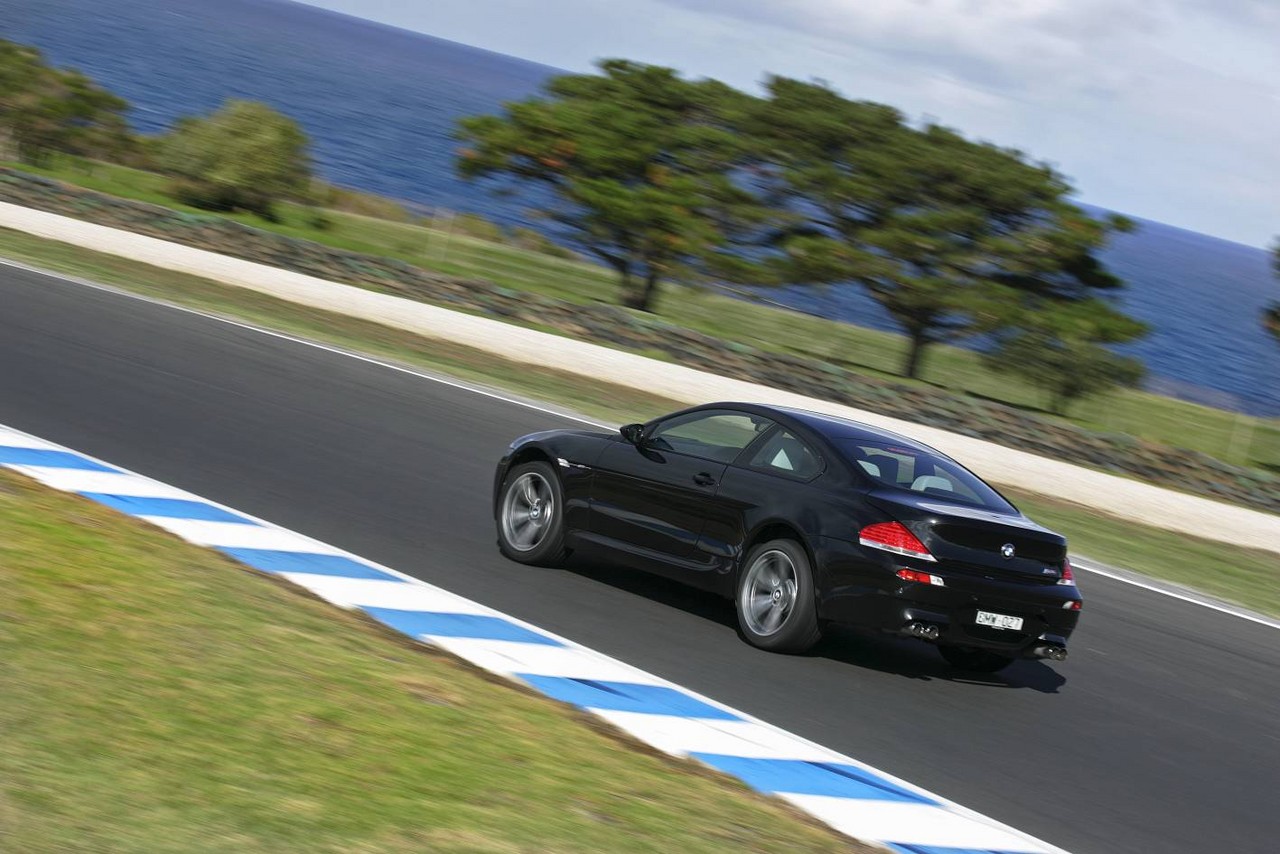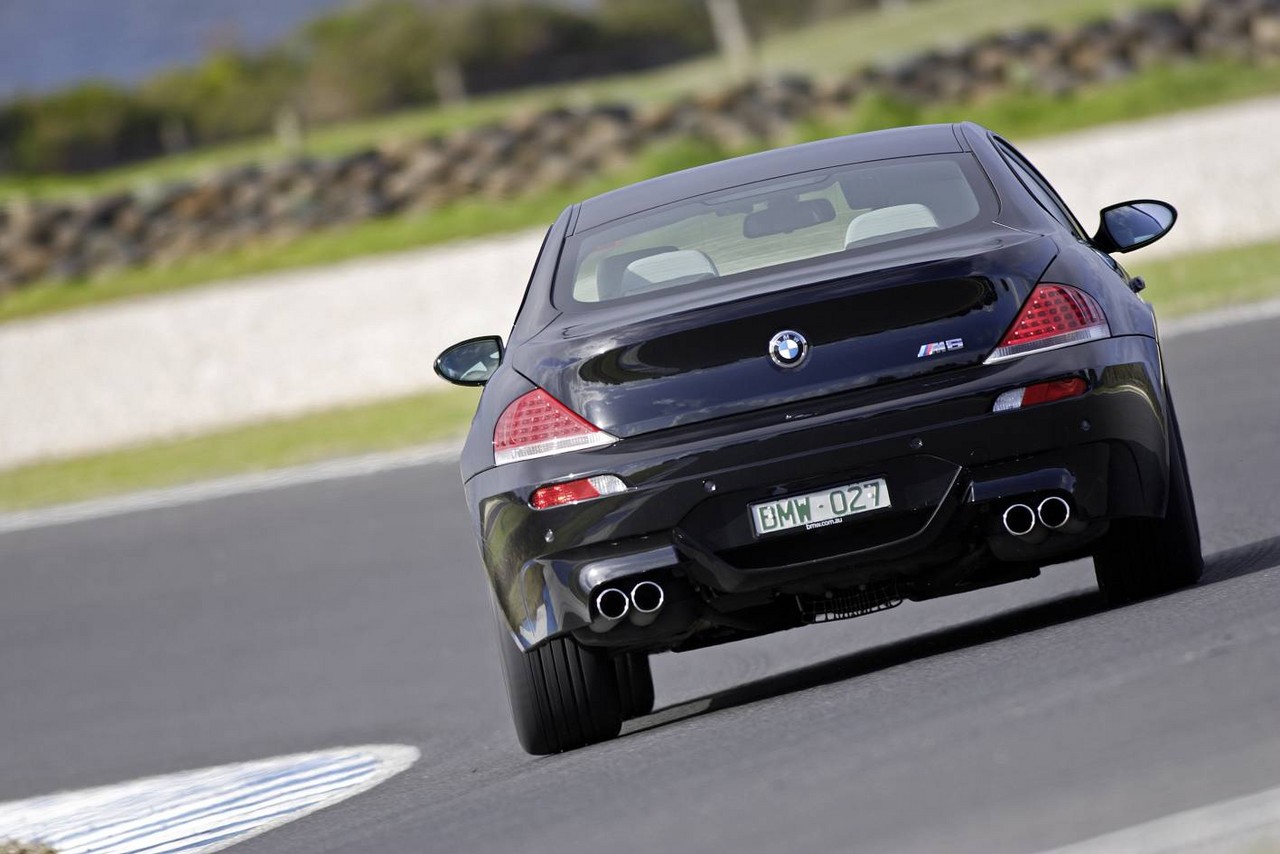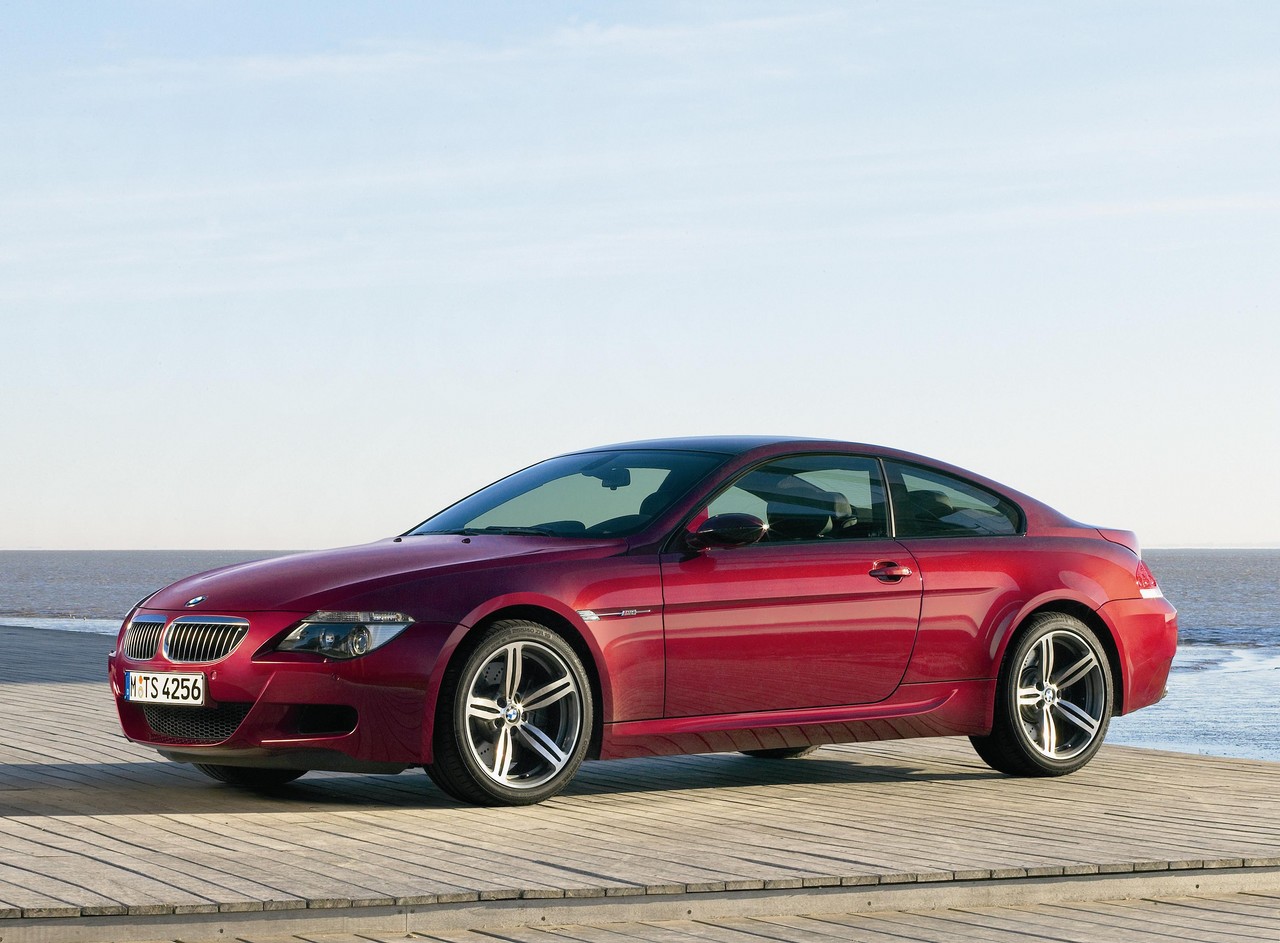
- Free-revving 5.0-litre V10 engine
- Impressive dynamics
- Powerful brakes
- Steering is direct and accurate…
- … but lacks feel
- Peaky power delivery
- Frustrating iDrive system
- Insufficient connecting rod bearing clearance to journal ratio for S85 engine thought to cause premature wear of the rod bearings
Review: BMW E63.I M6 Coupe (2005-07)
Overview
Released in Australia in October 2005, the BMW E63 M6 was a four-seat coupe with a power-operated soft-top roof. Manufactured in Dingolfing, Germany, the rear-wheel drive E63 M6 Coupe was powered by a 5.0-litre V10 petrol engine that was mated to a seven-speed semi-automatic transmission (BMW’s Sequential Manual Gearbox or SMG).
S85B50 V10 Engine
Shared with the BMW E60 M5 , the E63 M6 Coupe was powered by BMW’s S85B50 V10 petrol engine which had a two-piece Alusil crankcase with reinforcing bedplate, a one-piece aluminium cylinder head, a forged steel crankshaft which operated on six bearings, cracked forged steel connecting rods, double overhead camshafts, four valves per cylinder, spherical valve tappets, BMW’s double VANOS variable intake and exhaust camshaft phasing, throttle assemblies for each cylinder, semi-dry sump lubrication and a compression ratio of 12.0:1. The S85B50 engine weighed 240 kg.
The S85B50 engine’s MS S65 engine management system used ionic current technology to detect engine knock, misfiring and combustion misses. The ionic current satellite received signals from the five spark plugs of each cylinder bank. Depending on engine load, the satellite amplified these signals and transmitted them to the engine management system for analysis.
The S85B50 engine had an 8250 rpm redline and enabled the E63 M6 to accelerate from rest to 100 km/h in 4.6 seconds and to 200 km/h in 14.0 seconds. Although the M6’s top speed was electronically limited to 250 km/h, its theoretical top speed was 330 km/h. Over the combined EU test cycle, fuel consumption was 14.3 litres per 100 km.
Power modes
The E63 M6 had a ‘Power’ button which could be used to activate the following modes:
- P400: power was limited to 400 horsepower (298 kW) and standard throttle response was provided; and,
- P500: provided maximum power (500 horsepower or 373 kW) and provided faster throttle response.
Beyond this, however, the ‘M Drive’ button on the steering wheel enabled the driver to select the ‘P500 Sport’ mode which provided maximum power and even greater throttle response.
Sequential Manual Gearbox (‘SMG III’)
The E63 M6 had BMW’s third-generation seven-speed Sequential Manual Gearbox (BMW’s ‘SMG III’) which had a single automated clutch. The driver could select from eleven ‘Drivelogic’ shift programs, five for automatic gear shifting and six for manual gear shifting which was controlled via the steering wheel gearshift paddles. Gear ratios for the SMG III were as follows: 3.985 (1st), 2.652 (2nd), 1.806 (3rd), 1.392 (4th), 1.159 (5th), 1.000 (6th) and 0.833 (7th); the final drive ratio was 3.615:1.
Furthermore, the SMG had the following functions:
- Wheelslip detection: sought to prevent wheelspin in the event of high drag torque on the rear axle, such as during downshifts on slippery surfaces, via ‘intelligently controlled clutch operation’;
- Launch Control: sought to improve traction and performed gearshifts just before maximum engine speed was reached for maximum acceleration; and,
- Hill recognition: provided faster gearshifts and specific shift maps in Drive mode when going uphill or downhill to avoid gear ‘hunting’.
Dimensions
The E63 M6 Coupe was 4871 mm long, 1855 mm wide, 1372 mm tall and had a 2781 mm long wheelbase; its drag coefficient was 0.32 Cd. To conserve mass, the M6 Coupe’s roof and bumper supports were made from carbon-fibre reinforced plastic (CFRP); unladen weight was 1785 kg (EU).
Suspension
The E63 M6 Coupe had a two-joint spring strut front axle and an aluminium integral rear axle with longitudinal arms and double wishbone. The suspension also included BMW’s ‘Electronic Damper Control’ (EDC) which consisted of electronically-controlled dampers that continually adjusted according to road conditions. The driver could also select from ‘Comfort’, ‘Normal’ or ‘Sport’ drive modes.
Compared to the E63 6-Series Coupe , changes for the E63 M6 Coupe included:
- A modified front sub-frame and thrust plate for higher loads;
- Wider front track and narrower rear track;
- Revised suspension geometry;
- Stiffer bushings;
- Hollow half-shafts;
- Modified rear sub-frame;
- Unique spring rates; and,
- A 28 mm front anti-roll bar and an 18 mm rear anti-roll bar.
Steering
The E63 M6 had variable ratio, rack-and-pinion steering whereby the steering ratio varied according to the degree of lock applied; the mean ratio was 12.4:1. Power assistance (BMW’s ‘Servotronic’) was also varied according to vehicle speed and the EDC setting.
| Engine | Trans. | Years | Peak power | Peak torque | |
|---|---|---|---|---|---|
| M6 | 5.0-litre petrol V10 (S85 B50) | 7sp SMG | 2005-07 | 373 kW at 7750 rpm | 520 Nm at 6100 rpm |
Safety equipment
Standard safety equipment for the E63 M6 included dual front airbags, front side airbags, full-length curtain airbags, ABS, electronic brake force distribution, brake assist, electronic stability control (BMW’s ‘Dynamic Stability Control’ or DSC), cornering brake control, traction control, front seatbelts pretensioners, and front and rear seats with seatbelt load limiters.
Jointly developed by Teves and BMW, the Dynamic Stability Control system had an ‘M Dynamic Mode’ (MDM) setting which raised the yaw and wheelspin thresholds for intervention. The driver could also disable DSC.
Brakes
The E63 M6 had 374 mm by 36 mm vented and cross-drilled front brake discs with two-piston swing calipers and 370 mm by 24 mm cross-drilled and vented rear discs with single-piston swing calipers. The E63 M6 could decelerate from 100 km/h to rest in 36 metres.
Furthermore, braking system had the following functions:
- Brake Standby: prepared for hard braking by pressuring the pad against the rotor when the driver abruptly reduced throttle input;
- Brake Drying: to keep the brake pads dry, the brake pad was pressed against the rotor when the rain sensor detected moisture;
- Start-Off Assistant: applied the brakes for one second after the driver’s foot was removed from the brake pedal for uphill acceleration from rest;
- Comfort Stop: which eased braking pressure when coming to rest; and,
- Brake Fade Compensation: applied additional braking force when the brakes were hot to compensate for the loss of braking ability that occurred in such situations.
Features: BMW M6
Standard features for the M6 Coupe included 19-inch forged aluminium wheels (19 x 8.5J front and 19 x 9.5J rear) with 255/40 ZR19 front and 285/35 ZR19 rear tyres, a Logic7 sound system with thirteen speakers and a six-disc CD player, climate control air conditioning, satellite navigation, Bluetooth mobile phone connectivity, Merino leather upholstery, power adjustable and heated front seats with driver’s seat memory settings, voice recognition, cruise control, directional bi-xenon headlights with washers, front and rear fog lights, front and rear parking sensors, automatic headlights, rain-sensing wipers, a leather-wrapped steering wheel, remote central locking, power windows and heated mirrors, a power adjustable steering column (tilt and reach), a glass sunroof, electrochromatic and retracting door mirrors, head-up display, TV tuner, car phone, a heat-insulated windscreen, Alcantara headlining, courtesy lights, footwell lights, tyre pressure monitoring, an alarm and immobiliser.
Variable M Differential lock
The Variable M Differential Lock consisted of a shear pump and multi-disc clutch. Any difference in the rotational speed of the rear wheels would drive a shear pump which, in turn, increased pressure in the viscous silicon fluid that would cause the multi-disc clutch to engage and transfer torque to the rear wheel with greater traction. The greater the speed difference between the two wheels, the faster the clutch would engage.
Review: BMW E63.II M6 Coupe (2007-10)
Overview
Released in September 2007, the E63 Mk.II (E63.II) M6 Coupe introduced additional safety equipment and features. Visually, the E63.II M6 could be distinguished by its updated head- and tail-lights, LED indicator lights and restyled bootlid. Inside, the iDrive display and controller were updated, and programmable memory buttons were introduced for greater ease-of-use.
| Engine | Trans. | Years | Peak power | Peak torque | |
|---|---|---|---|---|---|
| M6 | 5.0-litre petrol V10 (S85 B50) | 7sp SMG | 2007-10 | 373 kW at 7750 rpm | 520 Nm at 6100 rpm |
Safety equipment
Compared to its E63.I predecessor, standard safety equipment for the E63.II M6 was improved with the introduction of active front seat head restraints.
Features
Standard features for the E63.II M6 were extended to include BMW’s ‘Comfort Access’ system with keyless entry and push-button, soft-close doors and a USB interface.
September 2008 and 2009 updates
In September 2008, the iDrive controller was updated with fixed buttons. In September 2009, a new iDrive system was introduced which had hard-drive based navigation (80GB) and a larger screen with enhanced graphics.
Related links
